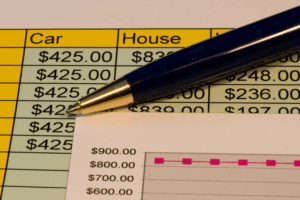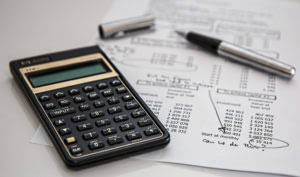
The above rules do not apply to the holder of a term interest in property acquired by gift, bequest, or inheritance. Depreciation is an annual income tax deduction that allows you to recover the cost or other basis of certain property over the time you use the property. It is an allowance for the wear and tear, deterioration, or obsolescence of the property. When it comes to filing taxes, understanding depreciation is essential for both businesses and individuals.

Electing To Use a GAA
- If the activity or the property is not included in either table, check the end of Table B-2 to find Certain Property for Which Recovery Periods Assigned.
- At the end of 2023, you had an unrecovered basis of $14,565 ($31,500 − $16,935).
- The above rules do not apply to the holder of a term interest in property acquired by gift, bequest, or inheritance.
- The units of production method is based on an asset’s usage, activity, or units of goods produced.
- For information about qualified business use of listed property, see What Is the Business-Use Requirement?
- You can figure it using a percentage table provided by the IRS, or you can figure it yourself without using the table.
The election must be made separately by each person owning qualified property (for example, by the partnerships, by the S corporation, or for each member of a consolidated group by the common parent of the group). You can take a 50% special depreciation allowance for qualified reuse and recycling property. Qualified reuse and recycling property also includes software necessary to operate such equipment. The following discussions provide information about the types of qualified property listed above for which you can take the special depreciation allowance. In addition to being a partner in Beech Partnership, Dean is also a partner in Cedar Partnership, which allocated to Dean a $30,000 section 179 deduction and $35,000 of its taxable income from the active conduct of its business.

What Property Cannot Be Depreciated?
If you claimed accelerated depreciation on a business aircraft and fail to meet either the 25% or 50% qualified business-use tests at any time during the class life for the aircraft, then the aircraft is placed on straight line depreciation. You must also recapture, as ordinary income, the excess depreciation claimed using accelerated depreciation in prior years over bookkeeping for cleaning business the amount which would have been allowable for the aircraft using the straight line method of depreciation under ADS. You cannot use the MACRS percentage tables to determine depreciation for a short tax year.

Idle Property
- If you acquire and place in service more than one item of qualifying property during the year, you can allocate the section 179 deduction among the items in any way, as long as the total deduction is not more than $1,220,000.
- On April 6, Sue Thorn bought a house to use as residential rental property.
- It is tangible personal property generally used in the home for personal use.
- It is taken into account in the year of change and is reported on your business tax returns as “other expenses.” A positive section 481(a) adjustment results in an increase in taxable income.
- The allowable depreciation for the tax year is the sum of the depreciation figured for each recovery year.
- However, it pays you for any costs you incur in traveling to the various sites.
- If there is more than one recovery year in the tax year, you add together the depreciation for each recovery year.
Make the election by entering “150 DB” under column (f) in Part III of Form 4562. The excess basis is the amount of any additional consideration given by the taxpayer in the exchange, for example, additional cash, liabilities, non-like-kind property, or other boot paid for the new property. After you figure your special depreciation allowance for your qualified property, you can use the remaining cost to figure your regular MACRS depreciation deduction (discussed in chapter 4). Therefore, you must reduce the depreciable basis of the property by the special depreciation allowance before figuring recording transactions your regular MACRS depreciation deduction. However, you do not take into account any credits, tax-exempt income, the section 179 deduction, and deductions for compensation paid to shareholder-employees.

Tara treats this property as placed in service on the first day of the sixth month of the short tax year, or August 1, 2024. The applicable convention establishes the date property is treated as placed in service and disposed of. Depreciation is allowable only for that part of the tax year the property is treated as in service. The recovery period begins on the placed in service date determined by applying the convention. The remaining recovery period at the beginning of the next tax year is the full recovery period less the part for which depreciation was allowable in the first tax year. If your property has a carryover basis because you acquired it in a nontaxable transfer such as a like-kind exchange depreciation tax shield or involuntary conversion, you must generally figure depreciation for the property as if the transfer had not occurred.
- This chapter discusses the deduction limits and other special rules that apply to certain listed property.
- The depreciation allowance for the GAA in 2024 is $3,200 ($10,000 − $2,000) × 40% (0.40).
- You multiply the adjusted basis of the property ($1,000) by the 40% DB rate.
- For additional credits and deductions that affect basis, see section 1016 of the Internal Revenue Code.
- Before changing the property to rental use last year, Nia paid $20,000 for permanent improvements to the house and claimed a $2,000 casualty loss deduction for damage to the house.


